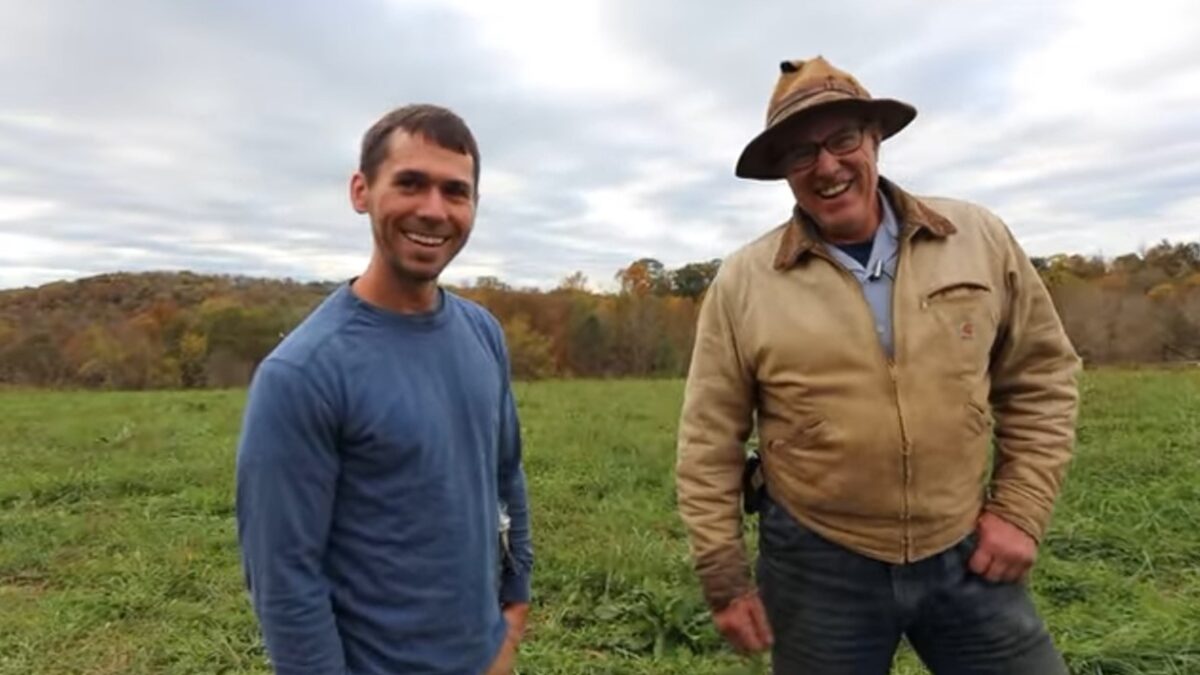
“I could teach anybody, even people in this room, no offense intended, to be a farmer,” Democrat presidential candidate Mike Bloomberg told students at the University of Oxford in 2016. “It’s a process. You dig a hole, you put a seed in, you put dirt on top, add water, up comes the corn. You could learn that.” He contrasted farming as an example of the old economy against more high-tech, Information Age jobs of the new economy.
Bloomberg on why farmers can’t work in information technology
MB: “I can teach anyone how to be a farmer 1 dig a hole 2 put a seed in 3 put dirt on top 4 add water 5 up comes the corn”
The skill 4information technology is completely different you need more grey matter#farmers pic.twitter.com/HM13tA6goz
— Pete (@NYBackpacker) February 15, 2020
It is obvious from these comments that not only has Bloomberg never visited a modern American farm, he probably hasn’t ever done a stick of gardening or landscaping in his entire life. Even a hobbyist small-time gardener like me can’t “dig a hole, put a seed in, put dirt on top, add water, and up comes” the plant. How deep should the hole be? It varies by plant. When do you plant them, and under what weather conditions? Again, it varies by plant.
What plants go well together and which don’t? How much should I water to avoid both drying out or molding my plants? How do I keep that seed going happily for months and braving pests and storms to get me that delicious cucumber or tomato? You only think these are easy problems if you’ve never tried to do it. Every year I have gardening successes and failures, and thank the Lord I don’t have to grow all our own food, or my whole family would be dead.
Food has gotten not only less time consuming, it’s gotten massively cheaper. Americans used to spend the majority of their income on food. Now we spend an average of less than 15 percent. That’s largely thanks to a revolution in agricultural efficiency known as the Green Revolution, which has saved billions from starvation and malnutrition.
Every time farmers spend less, use fewer resources, and get better crops, everybody who eats benefits. It means more money in my budget I can use on other things, including higher-end food. It means food with more nutrients, which is better for us all. And it means more food so fewer people go hungry.
How do farmers do all this? Well, nowadays it takes some freakishly expensive equipment, some high-grade science, a bit of luck with the weather, and a huge amount of hard, hard work.
1. Drones. Yes, Drones
For city people like I’ve become, drones are a useless irritation your neighbor uses to spy on you or dive-bomb the dog. For American farmers, drones are work equipment. They use them to check for pests, save water and fertilizer, and conserve resources.
2. Remote-Controlled Irrigation
You probably have never seen an irrigation line up close and personal. The most common kind in my experience is a big fat pipe with A-shaped legs that spans the length of an entire field and rotates around it in a circle or semicircle. As a kid, I used to tag along with my dad in his pickup to “check the irrigation lines.” I always groaned when he let it slip that’s where we were headed, because no one could predict how long the check would take. When one of those puppies broke down, it was a major project that needed immediate attention. It was also dangerous work that could kill people if a pipe blew under water pressure.
Now, a lot of that constant driving here and there just to make sure nothing is broken has been obviated by irrigation systems that can not only be monitored and remotely controlled from the farm office, the water pressure can be fine-tuned all the way down the entire field line. One part of the field can get extra water at the same time another, based on soil type and other fine-grained conditions, gets less.
Besides bringing farm dads home for dinner more often, this also reduces water use. Better food, happier workers and their families, less water. Thanks, technology!
(True story: My dad is every bit as good looking as the guy playing the farmer in this ad.)
3. GPS-Driven Machinery
Modern tractors use GPS to plant and tend perfectly straight rows and tailor nutrition and pest reduction to small, specific locations in fields. This reduces waste and increases crop yields on less land.
4. Reduce, Reuse, Recycle
Like organic farms and earth cultivators have for centuries, crop farmers today plant cover crops to return nutrients to the soil and prevent erosion. Farmers are highly motivated to take excellent care of their land because in return it will take excellent care of them and their customers.
Smart business also means not wasting. Farms keep close track of how long their machinery works and idles, fuel efficiency, and similar measures to ensure every resource they use is done so as efficiently and productively as possible. They also research improved techniques and machinery because technological advancement means feeding more people better food with fewer resources.
Big farms also rotate crops, just like small-time gardeners like me, to increase biodiversity, ensure the soil is at its optimum health, and reduce pests.
Yenifer Sanchez of Black Gold Farms in North Dakota gives some more examples of things farmers do to keep the land healthy for many more generations:
We are always looking for ways to cut miles out of the food chain by having farms, storage buildings, green houses and packaging sheds strategically located to provide a service year-round and be the grower, packer, shipper of choice. Our equipment has the highest tier engines and technology to track idle time and reduce the carbon footprints in the fields. Our packing sheds store, wash, pack and ship our potatoes to minimize extra handling and make sure all food safety guidelines are met. Some sustainable practices in our pack sheds are the refurbishment of pallets in house, recycling of corrugated packaging as well as plastic & metal and these tater-made poly bags. These potato bags are partially made from potato starch which means we can reduce our plastic waste by using biodegradable packaging made of potatoes.
Just like the biggest supporters of American conservation are hunters and fishers, the biggest supporters of environmental sustainability are American farmers. If the land isn’t doing well, they won’t either.
(Disclosure: I’m a volunteer committee member for the foundation that made this video.)
5. Data-Driven Crop Care
Modern produce farms collect real-time data on everything from pests, moisture, growth rates, rainfall, soil and produce nutrient levels, and more to guide their care for their plants. This also means they employ highly skilled scientists and math nerds to keep track of it all and advise on what to do in every situation to keep those precious crops at the peak of health.
6. Tech-Enhanced Livestock Cultivation
So far I’ve focused here on some sweet things crop farmers do. But American meat farmers are also amazing and technology driven. Dairy cows, for example, are often the best-treated cows you could imagine. I’ve seen them given massages, chocolate to eat, and stalls cleaner than most people’s houses. Computers attached to milking machines monitor how much each animal generates and its quality, and flag the farmer if anything is unusual so the cow can get immediate attention.
Last summer in Montana, I visited an experimental fish farm that belongs to a family member’s friend. She grows freshwater fish and uses their poop to feed greenhouse-grown organic plants. It looks a lot like this. The produce and the fish taste amazing, and made me want to a hobbyist kit for home. (I haven’t yet, because, well, probably I would kill both fish and plants through neglect.)









